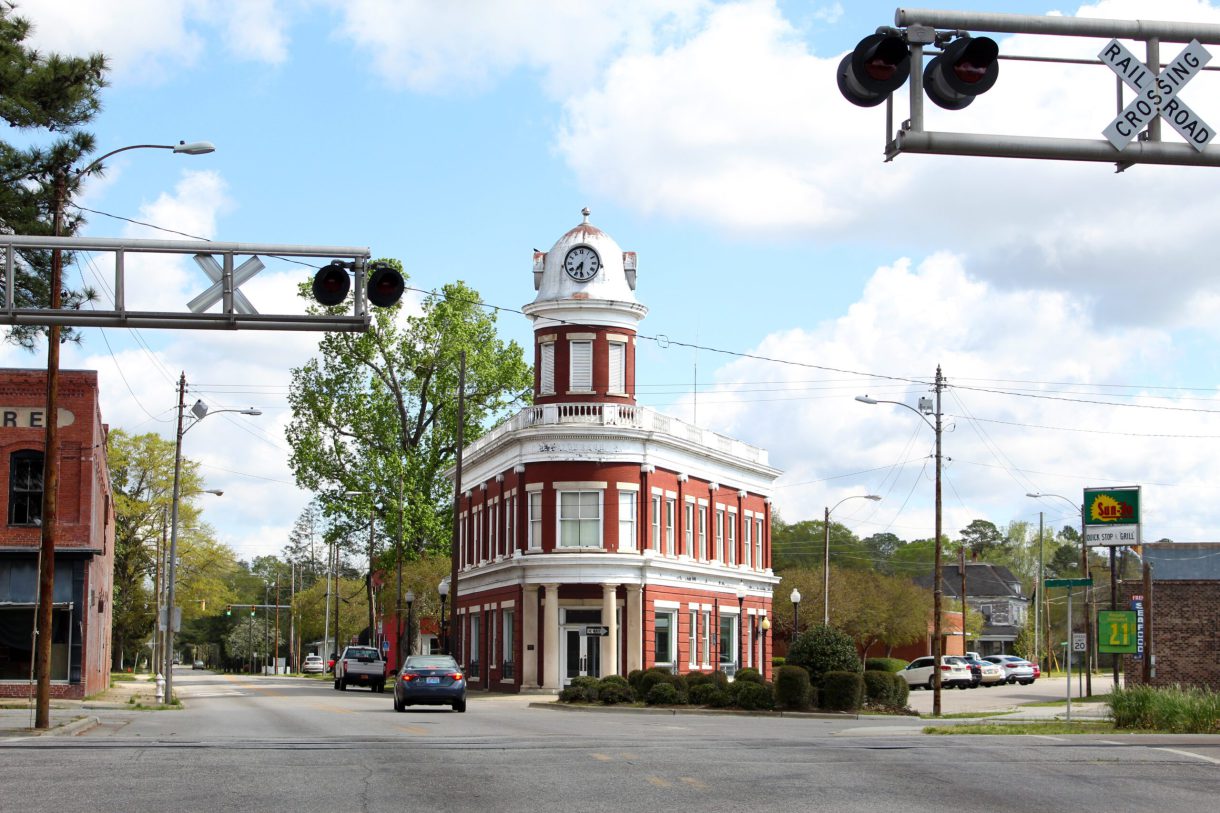
May 15-21 is National Public Works Week as recognized by the American Public Works Association (APWA). WithersRavenel salutes Public Works staff and officials throughout the state of North Carolina and the work they do to improve communities each day.
In 2022, APWA’s theme for the week is Ready and Resilient.And for WithersRavenel, a stellar example of our work to support community resilience is our multi-year partnership with the Southeastern Economic Development Commission (SEDC).
The SEDC, based in Elizabethtown, represents 12 counties in the southeastern part of North Carolina. Their main mission is to create and retain jobs while fostering economic investment, growth, and development. Additionally, due to the need for public infrastructure to support these efforts, the SEDC partnered with WithersRavenel to work with member counties and communities to seek funding for vital community projects from the U.S. Economic Development Administration (EDA) and other sources. The original relationship was born following Hurricanes Matthew and Florence.
This is where resilience enters the picture. Bob Taylor, WithersRavenel Funding and Asset Management consultant, was point person for our company’s relationship with SEDC and communities throughout the region. As Disaster Recovery Coordinator, Bob assisted communities in the region not only with recovery from often devastating hurricane damage, but also helped them build resilience into vital infrastructure projects.
Sometimes the impact to greater resilience was clearly visible:
- In Red Springs, WithersRavenel helped secure millions of dollars in funding for replacement of the Town’s water treatment plant and distribution system rehabilitation. Additionally, WithersRavenel and SEDC also helped the Town secure funding for generators to provide backup power for its water supply wells. In case of a prolonged power outage caused by flooding or hurricane damage, the plant would still have a reliable supply of water.
- In Clinton, supplemental funding will help the City relocate its influent pump station at the wastewater treatment plant to protect it from flooding.
- For Surf City, there is one water line from the mainland on the bridge over the Intracoastal Waterway to the City’s residents on Topsail Island. The single line put water customers at risk for lengthy outages if problems occurred; WithersRavenel was able to help Surf City get disaster relief funding for a second line to be installed under the Intracoastal Waterway to build in a layer of resilience and redundancy.
Other times, seemingly smaller changes provided a big lift for a community and boosted resiliency.
- In Clinton, a levee protects the wastewater plant from nearby creek flooding. Hurricanes Matthew and Florence left the levee with erosion damage. WithersRavenel helped the community find funding for levee repairs.
- The public works leader in Clarkton requested a utility vehicle. While one vehicle may seem like a small request, the vehicle helps Clarkton maintain their drainage canals and utility easements, which are vital to maintaining their infrastructure and build resiliency into their system.
- For Pembroke, WithersRavenel helped the Town find funding for a position that is equivalent to an assistant town manager. That extra set of hands not only worked on FEMA paperwork and community relations, but also freed up the Town Manager to tackle capital improvement planning and other projects to help the Town move forward.
For example, the Town (Pembroke) just completed a downtown renovation,Bob said. We didn’t help them directly with that, but the Town wouldn’t have been able to do that if they had not gotten additional staff for Town Hall.Bob said that the cities and towns with less municipal staff were often at a disadvantage in recovering from hurricane damage, building in resiliency, and even getting their needs heard at a regional and state level, so the funding for professional assistance was critical.
Sometimes, communities benefited from WithersRavenel’s expertise to take extra steps in the funding process to make a project work. In Richmond County, a water line was in a roadway that washed out following Hurricane Florence, also damaging a culvert. FEMA came in and was ready to fund the upsizing of the damaged culvert.
Once they did that, there was no longer room for the water line,Bob said. The County wanted to put the water line under a nearby creek, but FEMA would not pay for that. WithersRavenel was able to secure the necessary $106,000 in disaster relief funding through the Golden LEAF Disaster Recovery Program for the water line project.
The list of communities receiving funds to support resiliency, secured by WithersRavenel while working through SEDC, goes on. Sewer outfall replacement in Dublin. Emergency repairs in Lillington and Bolton. Water line replacement in Maxton. Funds to pay for finance officer and planning positions for small towns in Sampson and Columbus counties. Stormwater assessments in Cerro Gordo and Autryville.
The funding sources varied as well for these communities, reflecting WithersRavenel’s expertise in dealing with multiple state and federal entities. From EDA to FEMA, Community Development Block Grants (CDBG) to the U.S. Department of Agriculture (USDA), and from Golden LEAF to the North Carolina Office of Resiliency and Recovery (NCORR), communities in the SEDC region were able to leverage many sources for funding to support resiliency and public works projects.
We’re proud of our efforts to support resiliency and public works in southeastern North Carolina and across the state. Are you interested in putting our funding team to work for your community? Contact Taylor at btaylor@withersravenel.com.
